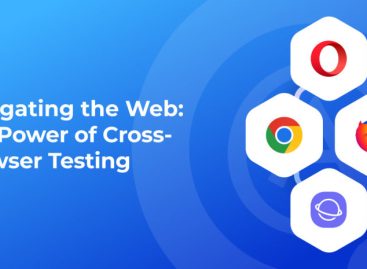- QATestLab Blog >
- QA for Business >
- Industries Insights >
- Testing within one project: what to verify first?
Testing within one project: what to verify first?

What to test first – software functionality, reliability or security? What aspects to verify in order to ensure a successful product release? What testing types to perform at projects with limited budget and fixed release date? Will omitted usability and GUI testing affect user experience? The article is called to give you answers to all the questions.
First of all, forget about a random choice of testing types for your project verification. A short in the dark isn’t acceptable. Only detailed and precise analysis of various parameters will help to detect required testing types and to ensure the release of high-quality software. Parameters can be divided into two groups:
- external (analysis of target market, specifics of target location, end users’ needs and expectations, customers’ requirements, allocated project budget, project schedule and timeframe, risk assessment and management)
- internal (software type, development model to apply, software requirements, available and required development resources, testing objectives, skills and competence of QA team, available and required testing infrastructure including tools and frameworks).
Internal Parameters
Now I’ll tell about how the choice of testing depends on software type. Every product has obligatory features and common functional purposes. For example, people use e-commerce solutions to make purchases online by entering their credit card information. As there is a huge variety of online stores, your one should work fast and properly and satisfy users’ expectations. So, for e-commerce products correct functionality and high security are of importance. Besides, don’t forget about Black Friday and holiday season when everyone is surfing the Internet buying various staff. Your website should be reliable and overcome high loads. In case of e-commerce solutions, functional, security and performance testing should be done.
Also, you should base all the testing processes on software requirements, expected system capacities, functional and business logic that are usually outlined in project specifications. But not every project has ready specification. Nevertheless, testing without or minimum documentation is also possible. Watch our webinar dedicated to the topic.
One more internal parameter – development model – defines the specifics of workflow and helps to arrange different stages of software deployment. Moreover, a development model determines when and how you should conduct testing activities. For example, testing comes after all development processes when Waterfall model applied. In case of Agile methodology, every sprint includes testing stage.
You should base quality verification on clearly defined testing objectives. They will help to determine what testing approaches and techniques to apply, define the scope of QA activities, schedule all processes, define required equipment and means. Limited testing infrastructure can become a real headache for QA team.
External Parameters
External parameters are not closely related to project specifics. A company or organization defines them. The specified external parameters give the basis for the determination of internal ones. Limited project budget as an external parameter affects not only development stage but also testing one. It defines QA team size and testing infrastructure.
You should analyze and assess potential risks taking into account available dev and QA resources, testing objectives, timeframes, software architecture, project team size, estimations, etc.
Analyze the mentioned above parameters before selecting software testing types and ensure a successful product release by guaranteeing its high quality.
Learn more from QATestLab
Related Posts:
- Money Matters: In-House vs. Independent Testing
- Software Testing for Travel Agencies
- The 2025 Cloudflare Outage: A Stress Test for SaaS Resilience
About Article Author
view more articles
has 6-year experience in e-commerce testing and 3-year experience in program management
View More Articles






No Comments Yet!
You can be the one to start a conversation.